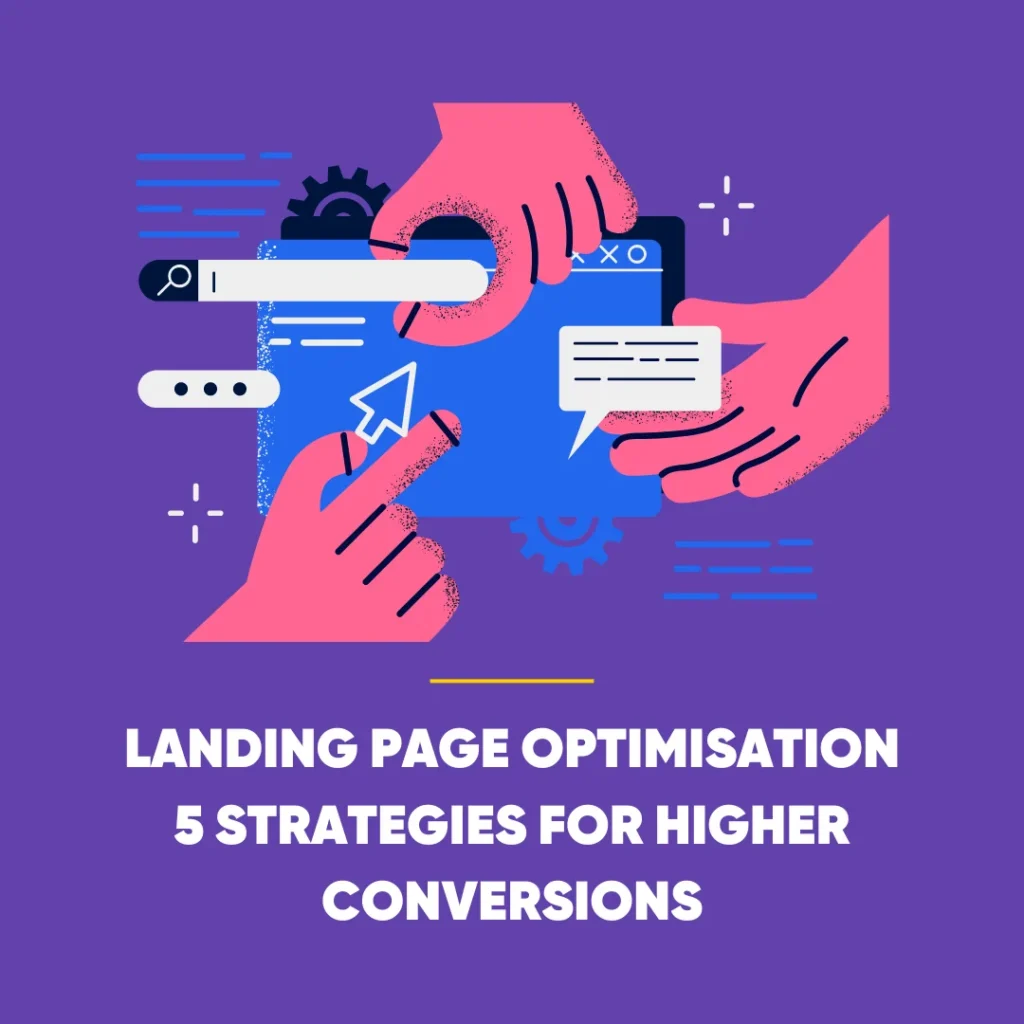Optimising performance with user experience (UX) holds immense significance in determining the success of a website. In today’s digital era, where users are accustomed to seamless interactions, delivering a positive UX has become paramount. By understanding user expectations and catering to their needs, websites can strategically leverage UX to enhance their overall performance.
Navigating with Ease
One crucial aspect of user experience is providing smooth navigation and usability. Users should effortlessly find what they seek, leading to a satisfying browsing experience. Incorporating clear and intuitive website navigation, along with consistent design and layout, enables users to navigate seamlessly across pages. Additionally, implementing responsive design ensures optimal display on various devices, keeping pace with the rising mobile usage.
The Need for Speed
Page loading speed significantly impacts user experience. Slow loading times frustrate users, leading to high bounce rates. Optimising website performance by employing techniques such as image compression, code minification, and caching helps enhance loading speed. By delivering swift and efficient experiences, websites can keep users engaged and satisfied.
Relevant Content, Readable Experience
The relevance and readability of website content play a vital role in user engagement. Offering valuable and pertinent information, organized in a structured manner, keeps users captivated. Proper formatting, with legible fonts and appropriate sizes, enhances readability and ensures seamless consumption of content.
Accessibility and Inclusivity: Optimising Performance with User Experience
To foster a positive user experience, websites must prioritize accessibility for all users. Employing features that cater to individuals with disabilities, such as clear headings and alternative text for images, promotes inclusivity and ensures a seamless experience for everyone.
Encouraging Action and Conversion
Strategically placed call-to-action (CTA) buttons and a simplified conversion process encourage user interaction and boost conversion rates. Testing different designs and placements through A/B testing allows websites to optimise CTAs for maximum effectiveness.
Error Handling and User Feedback: Optimising Performance with User Experience
Clear error messages and notifications assist users in understanding and resolving issues. Providing helpful feedback throughout the user journey improves their overall experience. Avoiding broken links and 404 errors contributes to a seamless browsing experience.
Monitoring and Improvement: Optimising Performance with User Experience
Monitoring website performance through analytics tools helps track user behaviour and identify areas for improvement. Gathering user feedback through surveys and usability testing provides valuable insights, enabling continuous enhancement of the user experience.
Navigation and Usability
In the vast digital landscape, users crave a seamless browsing experience that starts with efficient website navigation. A well-designed website should offer clear and intuitive navigation, maintain a consistent layout and design, and adapt effortlessly to mobile devices. Let’s delve deeper into each aspect to understand their significance.
Clear and Intuitive Navigation: Optimising Performance with User Experience
Effective website navigation acts as a roadmap for users, guiding them through the content seamlessly. Users should effortlessly find what they are looking for, enabling a positive user experience. By employing well-structured menus, logical categorization, and prominent search functionality, websites empower users to navigate with confidence and efficiency.
Consistent Layout and Design: Establishing Visual Harmony
Consistency in layout and design is key to maintaining a cohesive user experience. For example, by employing a consistent colour scheme, typography, and visual elements throughout the website, users are provided with a sense of familiarity and reliability. Additionally, consistent placement of key elements, such as the logo, menu, and search bar, allows users to locate them effortlessly, enhancing usability.
Responsive Design: Catering to the Mobile Generation
In today’s mobile-dominated world, responsive design is essential for delivering an optimal browsing experience across various devices. By adapting the website’s layout and content to different screen sizes, websites ensure that users can access and interact with their content seamlessly, whether on a desktop, tablet, or smartphone.
Smooth Transitions for Seamless Experience
With transitional words and phrases such as “furthermore,” “in addition,” and “moreover,” websites can facilitate smooth transitions between sections, enhancing the user’s understanding and engagement.
User-Centric Language for Clarity: Optimising Performance with User Experience
Utilizing straightforward and easy-to-understand language ensures that users comprehend the website’s navigation instructions clearly.
Page Loading Speed
In today’s fast-paced digital landscape, users demand instant gratification. Slow loading times on websites can significantly impact user experience, leading to frustration and high bounce rates. This article explores the consequences of sluggish loading speeds, optimisation techniques for enhancing website performance, and the importance of optimising images and minimizing code.
Slow Loading Times: The Culprit of User Frustration
When websites take ages to load, users are left disheartened. In addition, slow loading times not only test their patience but also diminish their interest in the content. Moreover, this leads to a higher likelihood of users abandoning the site and seeking faster alternatives. Ensuring fast loading times is vital for retaining users and delivering a satisfactory experience.
Optimisation Techniques: Optimising Performance with User Experience
Optimising website performance involves employing various techniques to enhance loading speed. Caching mechanisms, such as browser caching and server-side caching, store certain elements of the website locally, reducing the need to fetch them repeatedly. Compressing images, using content delivery networks (CDNs), and leveraging browser caching headers are proven methods to accelerate loading times.
Image Optimisation and Code Minimization: Unleashing the Need for Speed
Images are often the largest contributors to slow loading times. Optimising images by compressing them without compromising quality significantly reduces file sizes, thereby boosting loading speed. Similarly, minimizing code by removing unnecessary characters, reducing white spaces, and combining files eliminates redundancies and improves efficiency.
Content Relevance and Readability
When it comes to captivating website visitors, content plays a pivotal role. By providing valuable and relevant content, employing proper formatting and organization, and using legible fonts and appropriate sizes, websites can create an engaging user experience. This article delves into the importance of these factors and their impact on user satisfaction.
Value and Relevance: Optimising Performance with User Experience
Delivering content that is valuable and relevant to the target audience is paramount. Users seek information, solutions, and entertainment. By understanding their needs and crafting content that addresses those needs, websites can foster engagement, encourage return visits, and build trust and credibility.
Proper Formatting and Organization: Guiding User Journey
Formatting and organization are vital to ensure content is easily consumable. Utilizing headings, subheadings, bullet points, and paragraphs break down information into digestible chunks. Clear and concise sentences facilitate readability and comprehension. Additionally, incorporating visual elements, such as images, infographics, and videos, enhances user engagement and aids in conveying complex concepts effectively.
Legible Fonts and Appropriate Sizes: Optimising Performance with User Experience
The choice of fonts and sizes significantly impacts the readability of the content. Opting for legible fonts that are easy on the eyes, such as sans-serif fonts like Arial or Helvetica, ensures a smooth reading experience. Using appropriate font sizes, ideally between 16px and 20px for body text, allows users to read effortlessly across various devices.
Accessibility and Inclusivity
Inclusive design goes beyond aesthetics; it is about creating an accessible digital space that caters to users with disabilities. Certainly, by ensuring accessibility, implementing clear and descriptive headings, and using alternative text for images and multimedia, websites can foster an inclusive user experience. This piece explores the importance of these practices and their impact on creating an accessible online environment.
Accessibility for Users with Disabilities: Empowering Equal Access
Websites should be accessible to individuals with disabilities, ensuring equal access to information and services. By adhering to accessibility guidelines, such as the Web Content Accessibility Guidelines (WCAG), websites can accommodate users with visual impairments, hearing impairments, cognitive disabilities, and motor disabilities.
Clear and Descriptive Headings: Optimising Performance with User Experience
Clear and descriptive headings assist all users, especially those who rely on screen readers or have cognitive disabilities. Well-structured headings improve content comprehension, aid in navigation, and allow users to skim through the content efficiently.
Alternative Text for Images and Multimedia: Enabling Contextual Understanding
Including alternative text (alt text) for images and multimedia elements provides meaningful descriptions to users who cannot visually perceive the content. For example, alt text conveys the purpose and context of the visual element, ensuring that users with visual impairments can comprehend the information being conveyed.
Call-to-Action (CTA) and Conversion Optimisation
CTAs (Call-to-Actions) are the driving force behind user interactions and conversions on a website. By strategically placing and designing effective CTAs, simplifying the conversion process, and utilizing A/B testing, websites can boost their conversion rates. Moreover, this article explores the importance of these elements and their impact on driving user engagement and conversions.
Placement and Design: Optimising Performance with User Experience
Strategic placement of CTAs plays a vital role in capturing users’ attention and prompting them to take action. Placing CTAs in prominent positions, such as above the fold or at the end of engaging content, ensures visibility and increases the likelihood of user engagement. Designing visually appealing and compelling CTAs, with clear and actionable text, encourages users to click and complete the desired action.
Simplifying the Conversion Process: Optimising Performance with User Experience
A seamless conversion process can significantly impact user engagement and conversion rates. Simplifying the process by minimizing form fields, removing distractions, and providing clear instructions reduces friction and improves the overall user experience. Each step of the conversion process should be intuitive and effortless, guiding users towards completing the desired action smoothly.
A/B Testing: Optimising for Maximum Effectiveness
A/B testing involves comparing two or more variations of CTAs, designs, or conversion processes to determine which performs better. By testing different elements, such as CTA placement, button colour, or form length, websites can identify the most effective combination to maximize conversion rates. A/B testing provides valuable insights and allows for data-driven decision-making, leading to continuous improvement.
Error Handling and Feedback
A seamless user experience hinges not only on smooth interactions but also on effective error handling and feedback mechanisms. Additionally, by providing clear error messages and notifications, offering helpful feedback, and avoiding broken links and 404 errors, websites can minimize user frustration and create a more user-friendly environment. This article explores the importance of these practices and their impact on enhancing user experience.
H2: Clear Error Messages and Notifications: Resolving User Confusion
Clear and concise error messages and notifications are crucial for guiding users when something goes wrong. Furthermore, messages should be specific, avoiding technical jargon, and providing actionable steps to resolve the issue. By communicating errors effectively, websites can alleviate user confusion and frustration, enabling them to move forward with ease.
Providing Helpful Feedback: Optimising Performance with User Experience
Additionally, offering helpful feedback throughout the user journey is essential for enhancing user experience. To illustrate, informative notifications, progress indicators, and confirmation messages reassure users that their actions are being processed successfully. Providing feedback on form submissions, account creations, or purchases instils confidence and keeps users informed about the status of their interactions.
Avoiding Broken Links and 404 Errors: Maintaining Seamless Navigation
Broken links and 404 errors disrupt the user experience and erode trust. Conducting regular link checks and monitoring for broken links helps ensure that users are not met with dead ends. For example, implementing custom 404 error pages that provide clear explanations, relevant suggestions, and an option to navigate back to the main site mitigates frustration and keeps users engaged.
Performance Monitoring and User Feedback
In the ever-evolving digital landscape, optimising website performance is essential for success. For this reason, by utilizing analytics tools to track performance, gathering user feedback through surveys and usability testing, and embracing continuous improvement based on data and feedback, websites can enhance user experience and achieve long-term growth. This article delves into the significance of these practices and their impact on driving website improvement.
Utilizing Analytics Tools: Unveiling Insights for Growth
Analytics tools provide valuable data and insights into website performance, user behaviour, and trends. By tracking metrics such as page views, bounce rates, and conversion rates, websites can identify areas for improvement and make data-driven decisions. In fact, analysing visitor demographics, referral sources, and user flow helps optimise marketing strategies and tailor content to target audiences effectively.
Gathering User Feedback: Optimising Performance with User Experience
User feedback is a goldmine of insights for website improvement. For instance, surveys, feedback forms, and usability testing allow websites to gather first-hand feedback from users. This feedback uncovers pain points, identifies areas of confusion, and sheds light on user preferences. Understanding user perspectives helps in aligning website design, content, and functionality with user expectations.
Continuous Improvement: Evolving with Data and Feedback
Additionally, data and user feedback provide the foundation for continuous improvement. By analysing the insights gained from analytics and user feedback, websites can prioritize and implement changes to enhance user experience. All in all, this iterative approach ensures websites stay aligned with user needs, adapt to emerging trends, and foster growth over time.
Conclusion
In summary, User Experience (UX) plays a pivotal role in determining the success of a website. By understanding the impact of UX on website performance, prioritizing user needs and expectations, and continuously evaluating and improving UX, websites can create a compelling digital experience that drives engagement and achieves outstanding performance. All in all, this article explores the significance of these factors and their influence on website success.
The Impact of UX on Website Performance: A Holistic Perspective
User experience directly influences website performance in numerous ways. A well-crafted UX ensures visitors can easily navigate the site, find desired information, and accomplish their goals efficiently. Positive UX cultivates user satisfaction, encourages longer visit durations, lowers bounce rates, and improves conversion rates. By prioritizing UX, websites can create an environment that captivates users and enhances overall performance.
Prioritizing User Needs and Expectations: Optimising Performance with User Experience
Understanding user needs and expectations is fundamental to delivering exceptional UX. As a result, websites must research their target audience, identify pain points, and tailor the experience to meet user preferences. Intuitive navigation, relevant content, and seamless interactions should align with user expectations, providing them with a sense of value and purpose.
Continuous Evaluation and Improvement: Evolving for Success
To sustain and improve website performance, continuous evaluation and improvement of UX are essential. For example, regularly analysing user feedback, monitoring analytics data, and conducting usability testing enable websites to uncover areas for enhancement. All in all, by iteratively implementing changes based on insights, websites can adapt to evolving user demands, address usability issues, and maintain a competitive edge.
Find out more about what’s happening within the digital marketing in our blog column.















